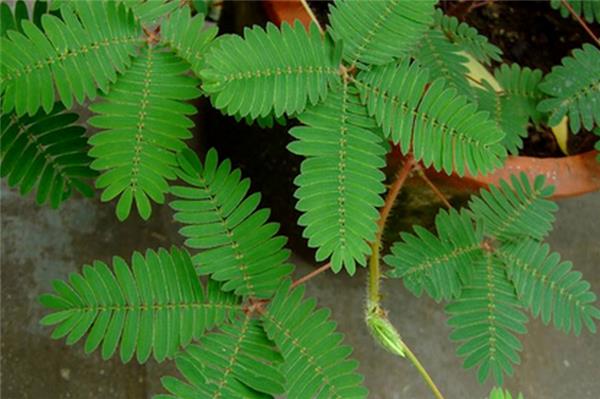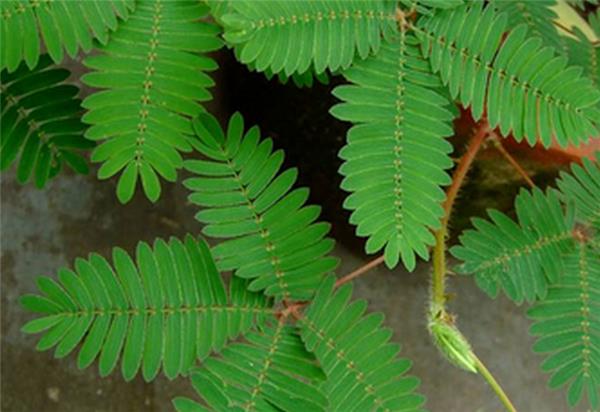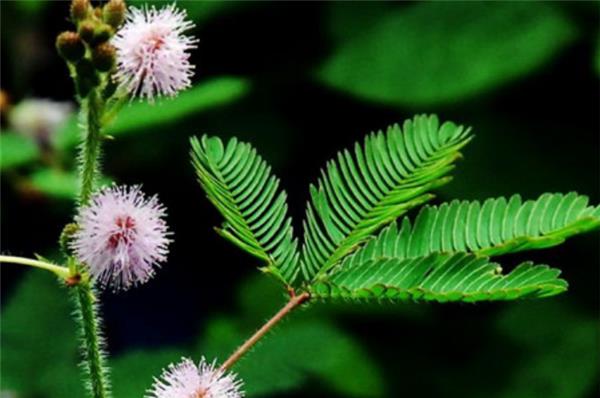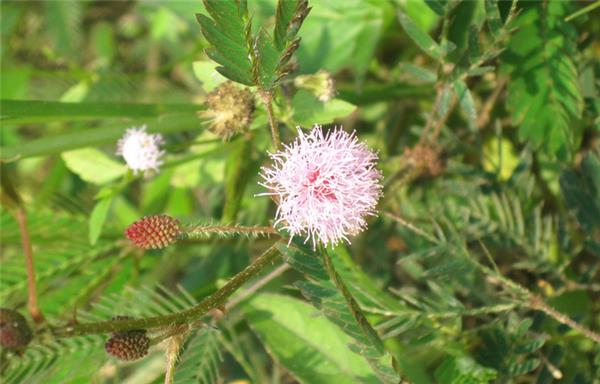Why is Mimosa shy?
Listening to the word mimosa, there will inevitably be questions in our minds, why is mimosa shy? When will the mimosa be shy? Mimosa is a lovely plant that shrinks its leaves at a touch. It is suitable for balcony and indoor potted flowers, and many people will plant it in the courtyard. So what are the culture methods of mimosa? The following is a combination of mimosa pictures, while understanding the cultivation methods of mimosa, I believe that interested friends will benefit you a lot after reading it.

First, the reason for the shyness of the mimosa
Mimosa grows on sunny grasslands in general, as long as it encounters external forces, then its pinnae will rise, and then the other leaves will gradually close and then hang down. Many people are surprised by it. In fact, this is a relatively common phenomenon of plant movement in the plant world.
Because the inner leaf has a large vacuole, and in the position of the leaf and petiole, there is a scientific name called the leaf pillow, when these parts are stimulated, some of the relatively low potential receptive cells in the interior will immediately release water, and then the petiole will droop, and the leaf will lose the expansion between the internal cells due to the loss of water, which makes the leaf close. In fact, it will also close at night, in fact, it is all caused by the pressure of internal cell expansion. In fact, its principle is the same as catching Cordyceps sinensis.
The shyness principle of mimosa has a lot to do with its original environment. Because in the tropics, there is plenty of water and there is often rainy weather, and mimosa closes its leaves in time to prevent wind and rain from damaging the leaves, which is also a sign of natural evolution.

Second, the culture method of mimosa
1. Soil: mimosa has strong adaptability and lax requirements on soil, grows well in moist and fertile soil, and sows in the culture soil mixed with 2 parts of rotten leaf soil, 3 parts of garden soil and 5 parts of fine yellow sand.
2. Watering: mimosa likes to be wet and watered once a day during the summer growing season.
3. Sunshine: mimosa likes plenty of light and is slightly resistant to semi-shade.
4. Temperature: mimosa, as a potted ornamental flower, should be moved into the sunny place indoors in winter and can survive the winter safely at room temperature of 10-12 ℃.
5. Fertilization: mimosa does not need much fertilizer during its growing period, so you can apply dilute liquid fertilizer for 2-3 times, do not grow in vain, because mimosa is mainly used as an interesting foliage flower, small is better.

Third, the function of mimosa
Ornamental function: the plant shape of mimosa is scattered, and its flowers are beautiful and moving, giving people the impression of being weak and elegant, and it has a unique charm when planted in the corner of the courtyard or placed in the windowsill with potted plants. Now it is mostly used for ornamental plants in the family to breed.
Predictive effect: mimosa is also a wonderful plant that can well predict changes in the weather. If we touch it with our hands, its leaves will close quickly, and it will open slowly, which means that the weather will clear up; while if we touch it, its leaves will contract slowly and droop slowly, or even close and reopen a little bit, which means that the weather will change from sunny to overcast or it is going to rain.

Mimosa has ornamental and medicinal functions, and it also has the unique role of weather prediction and earthquake prediction. Those who like mimosa might as well raise several pots and decorate them at home.
Related
- Wuhan Hospital Iron Tree Blooming Result Was Instantly Frightened by the Gardener Master
- Which variety of camellia is the most fragrant and best? Which one do you like best?
- What is the small blue coat, the breeding methods and matters needing attention of the succulent plant
- Dormancy time and maintenance management of succulent plants during dormancy
- Minas succulent how to raise, Minas succulent plant pictures
- What are the varieties of winter succulent plants
- How to raise succulent plants in twelve rolls? let's take a look at some experience of breeding twelve rolls.
- Attention should be paid to water control for succulent plants during dormant period (winter and summer)
- Watering experience of twelve rolls of succulent plants
- Techniques for fertilizing succulent plants. An article will let you know how to fertilize succulent plants.



